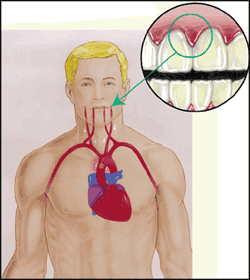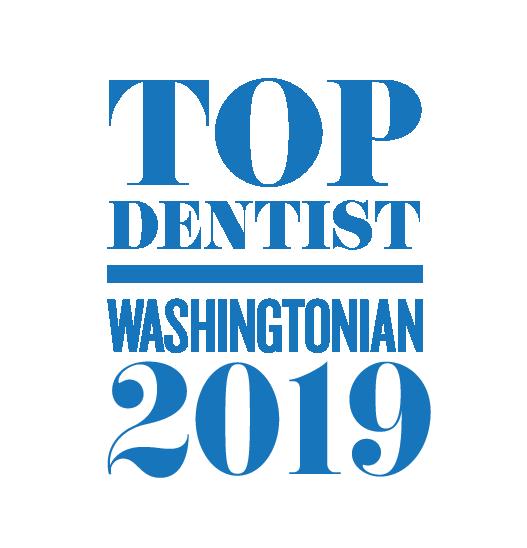The American Academy of Periodontology seeks to educate the public about research findings which support what dental professionals have long suspected: Infections in the mouth can play havoc elsewhere in the body. For a long time it was thought that bacteria was the factor that linked periodontal disease to other infections in the body; however, more recent research demonstrates that inflammation may link periodontal disease to other chronic conditions.
Research has shown, and experts agree, that there is an association between periodontal diseases and other chronic inflammatory conditions, such as diabetes, cardiovascular disease and Alzheimer’s disease. Therefore, treating inflammation may not only help manage periodontal diseases but may also help with the management of other chronic inflammatory conditions.
When an inflammatory condition is suspected or diagnosed, it is important to consult with both a general physician and a dental health professional, such as a periodontist. Sometimes the only way to detect periodontal diseases is through a periodontal evaluation. A periodontal evaluation may be especially important if you:
- Have a high risk for periodontal diseases. Take the AAP risk assessment test.
- Have heart disease, diabetes, respiratory disease or osteoporosis, or are thinking of becoming pregnant.
- Have a family member with periodontal disease. Research suggests that the bacteria that cause periodontal disease can pass through saliva. This means the common contact of saliva in families puts children and couples at risk for contracting the periodontal disease of another family member.
- Have a sore or irritation in your mouth that does not get better within two weeks.
Gum Disease and Diabetes
People with diabetes are more likely to have periodontal disease than people without diabetes, probably because diabetics are more susceptible to contracting infections. In fact, periodontal disease is often considered the sixth complication of diabetes. Those people who don’t have their diabetes under control are especially at risk.
A study in the Journal of Periodontology found that poorly controlled type 2 diabetic patients are more likely to develop periodontal disease than well-controlled diabetics are.
Research has emerged that suggests that the relationship between periodontal disease and diabetes goes both ways – periodontal disease may make it more difficult for people who have diabetes to control their blood sugar.
Severe periodontal disease can increase blood sugar, contributing to increased periods of time when the body functions with a high blood sugar. This puts diabetics at increased risk for diabetic complications. Thus, diabetics who have periodontal disease should be treated to eliminate the periodontal infection.
This recommendation is supported by a study reported in the Journal of Periodontology in 1997 involving 113 Pima Indians with both diabetes and periodontal disease. The study found that when their periodontal infections were treated, the management of their diabetes markedly improved.
 Heart Disease
Heart Disease
Several theories exist to explain the link between periodontal disease and heart disease. One theory is that oral bacteria can affect the heart when they enter the blood stream, attaching to fatty plaques in the coronary arteries (heart blood vessels) and contributing to clot formation. Coronary artery disease is characterized by a thickening of the walls of the coronary arteries due to the buildup of fatty proteins. Blood clots can obstruct normal blood flow, restricting the amount of nutrients and oxygen required for the heart to function properly. This may lead to heart attacks.
Another possibility is that the inflammation caused by periodontal disease increases plaque build up, which may contribute to swelling of the arteries.
Researchers have found that people with periodontal disease are almost twice as likely to suffer from coronary artery disease as those without periodontal disease.
Periodontal disease can also exacerbate existing heart conditions. Patients at risk for infective endocarditis may require antibiotics prior to dental procedures. Your periodontist and cardiologist will be able to determine if your heart condition requires use of antibiotics prior to dental procedures.
Stroke
Additional studies have pointed to a relationship between periodontal disease and stroke. In one study that looked at the causal relationship of oral infection as a risk factor for stroke, people diagnosed with acute cerebrovascular ischemia were found more likely to have an oral infection when compared to those in the control group.
Gum Disease and Pregnancy Problems
For a long time we’ve known that risk factors such as smoking, alcohol use, and drug use contribute to mothers having babies that are born prematurely at a low birth weight.
Some studies have suggested the possibility of an additional risk factor – periodontal disease. Pregnant women who have periodontal disease may be more likely to have a baby that is born too early and too small. However, more research is needed to confirm how periodontal disease may affect pregnancy outcomes.
All infections are cause for concern among pregnant women because they pose a risk to the health of the baby. The Academy recommends that women considering pregnancy have a periodontal evaluation.
Gum Disease and Respiratory Diseases
Bacterial respiratory infections are thought to be acquired through aspiration (inhaling) of fine droplets from the mouth and throat into the lungs. These droplets contain germs that can breed and multiply within the lungs to cause damage. Recent research suggests that bacteria found in the throat, as well as bacteria found in the mouth, can be drawn into the lower respiratory tract. This can cause infections or worsen existing lung conditions. People with respiratory diseases, such as chronic obstructive pulmonary disease, typically suffer from reduced protective systems, making it difficult to eliminate bacteria from the lungs.
Scientists have found that bacteria that grow in the oral cavity can be aspirated into the lung to cause respiratory diseases such as pneumonia, especially in people with periodontal disease. This discovery leads researchers to believe that these respiratory bacteria can travel from the oral cavity into the lungs to cause infection.
Chronic obstructive pulmonary diseases (COPD) cause persistent obstruction of the airways. The main cause of this disease is thought to be long-term smoking. Chemicals from smoke or air pollution irritate the airways to cause obstruction. Further damage to the tissue and working function of the lungs can be prevented, but already damaged tissue cannot be restored – untreated or undetected COPD can result in irreversible damage. Scientists believe that through the aspiration process, bacteria can cause frequent bouts of infection in patients with COPD. Studies are now in progress to learn to what extent oral hygiene and periodontal disease may be associated with more frequents bouts of respiratory disease in COPD patients.
Gum Disease and Osteoporosis
Researchers have suggested that a link between osteoporosis and bone loss in the jaw. Studies suggest that osteoporosis may lead to tooth loss because the density of the bone that supports the teeth may be decreased, which means the teeth no longer have a solid foundation. However, hormone replacement therapy may offer some protection.
One study published in the June 2007 Journal of Periodontology (JOP) examined 1,256 postmenopausal women and looked for a potential association between periodontal bacteria and bone loss in the oral cavity. The study results showed that women with periodontal bacteria in their mouths were also more likely to have bone loss in the oral cavity, which can lead to tooth loss if not treated.
A study of 106 postmenopausal women over more than 10 years concluded they could significantly reduce tooth loss by controlling their periodontal disease.
Another JOP study published in August 1999 concludes that estrogen supplementation in women within five years of menopause slows the progression of periodontal disease. Researchers have suspected that estrogen deficiency and osteopenia/osteoporosis speed the progression of oral bone loss following menopause, which could lead to tooth loss. The study concluded that estrogen supplementation may lower gingival inflammation and the rate of attachment loss (destruction of the fibers and bone that support the teeth) in women with signs of osteoporosis, thus helping to protect the teeth.
Bisphosphonates: Implications for Your Periodontal Therapy
Recently, there has been information in the news about taking bisphosphonates and the implications on your periodontal health. Below are some questions and answers about taking bisphosphonates, osteoporosis, and osteonecrosis of the jaw (the condition associated with taking bisphosphonates). It also links to helpful resources available online.
What are bisphosphonates?
Bisphosphonates, also known as bone-sparing drugs, are commonly used in the treatment of osteoporosis and cancer that has spread to the bone. Doctors prescribe intravenous bisphosphonate therapy for patients with cancer that has spread to the bone to help decrease associated pain and fractures. This intravenous therapy was the subject of precautions set out by the FDA. In addition, emerging research is exploring the ability of intravenous bisphosphonate therapy to inhibit the spread of some cancers to the bone.
What is osteonecrosis of the jaw (ONJ)?
This condition has been observed in individuals with cancer who undergo invasive dental procedures such as dental implants or tooth extractions while receiving treatment with intravenous bisphosphonates. ONJ can cause severe, irreversible and often debilitating damage to the jaw.
Who can develop ONJ?
The FDA recognizes additional risk factors associated with the development of osteonecrosis (not limited to the jaw) in cancer patients, such as female sex, advanced age, edentulous regions, combination cancer therapy, blood dyscrasias/metastatic disease, anemia coagulopathy, surgical dental procedures, and prior infection.
What is osteoporosis?
People diagnosed with osteoporosis have low or decreasing bone mass and must take extra care in performing day-to-day activities because they are at increased risk for bone fractures. Because bone loss is associated with both osteoporosis and periodontal disease, it is questioned whether the two are related. The association has been difficult to prove because of the many similar risk factors for these two diseases, including smoking, age, medications, and systemic diseases.
What is periodontal disease?
Periodontal diseases are chronic bacterial infections that release toxins that cause redness and inflammation. This inflammation damages the gums and bone supporting the teeth and if left untreated can lead to tooth loss. Furthermore, this infection can travel throughout the body. In fact, periodontal diseases have been linked to other inflammatory conditions such as cardiovascular disease, diabetes, and rheumatoid arthritis..
The main cause of periodontal diseases is bacteria in dental plaque, a sticky colorless film that constantly forms on the teeth. Plaque buildup can lead to the earliest and mildest form of the disease, gingivitis. During this stage, the gum tissue can swell, turn red, and bleed easily, causing little or no discomfort. Gingivitis is reversible with professional treatment and good at-home oral hygiene. Without this care, you may put yourself at risk for more severe forms of periodontal disease. Periodontists are the dental professionals who specialize in treating periodontal disease.
How should a periodontist treat someone who is taking bisphosphonates?
The decision about what treatment you should receive must be made by a periodontist in the exercise of his or her best judgment. However, in light of the precautions, periodontists are advised to determine whether you are receiving intravenous bisphosphonate therapy. If so, invasive dental procedures should be avoided unless absolutely necessary. Conversely, if a periodontist becomes aware that you are going to be treated with intravenous bisphosphonates, any needed invasive dentistry should, if possible, be performed before the initiation of such treatment. Finally, periodontists should endeavor to identify ONJ and other oral complications of cancer and cancer therapy.
© American Academy of Periodontology and Perio.org, 08/18/2011









